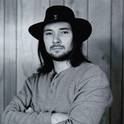Interaction of high-power laser radiation with rarefied, fully ionized plasmas is rich in nonlinear collective phenomena. It is essentially three-dimensional and is dominated by the excitation of various modes of plasma oscillations, most important of which are electron Langmuir waves. These waves may trap externally injected electrons or initially quiescent plasma electrons, accelerating them to GeV-scale energies. Laser pulses can also launch collisionless shocks, which may accelerate plasma ions to MeV energies. Furthermore, relativistic mass effect and electron density perturbations by the radiation pressure cause laser pulse self-focusing and filamentation, leading to the radiation pulse self-guiding over many Rayleigh lengths. Electron fluid dynamics in the field of intense laser pulse is the main focus of this course. More specifically, theoretical description of the multidimensional Langmuir waves will be given, with the emphasis on the excitation methods, nonlinear frequency shifts, the wave breaking in one, two, and three spatial dimensions, and connection of the wave breaking phenomenon with the trapping and acceleration of plasma electrons. Experimental methods of plasma wave diagnostics will be briefly reviewed. Electron injection and trapping in multi-dimensional electron Langmuir waves will be considered, with the emphasis on the role of multi-dimensional effects and wave evolution. Fundamentals of theory of collisionless shocks will be reviewed. Stimulated processes of Raman and Brillouin scattering will be described. Various theoretical approaches to the description of relativistic and ponderomotive self-focusing in uniform lasmas and plasma channels will be considered.
Lectures will be based on original research papers, which will be uploaded on Blackboard. Recommended additional reading includes Short Pulse Laser Interactions with Matter: an Introduction by Paul Gibbon (Ch. 1-4), Methods in Nonlinear Plasma Theory by R. C. Davidson (Ch. 1, 3, 4), Plasma Electrodynamics by A. I. Akhiezer et al. (Ch. 4, 6, 8), and Principles of Plasma Electrodynamics by A. F. Alexandrov, L. S. Bogdankevich, and A. A. Rukhadze. Review of collisionless shocks will follow Reviews of Plasma Physics: Cooperative Phenomena and Shock Waves in Collisionless Plasmas by R. Z. Sagdeev.
The grade in this course will be pass/fail determined predominantly by class participation. Each week, some students will be asked to discuss original research papers or selected topics/problems from the literature. As a part of the grading, in the end of the semester, each student will prepare 20-25 min presentation/tutorial of the topic of his/her choice.
- Langmiur waves,
- warm plasma,
- laser wake,
- wavebreaking
Available at: http://works.bepress.com/serguei_kalmykov/47/
